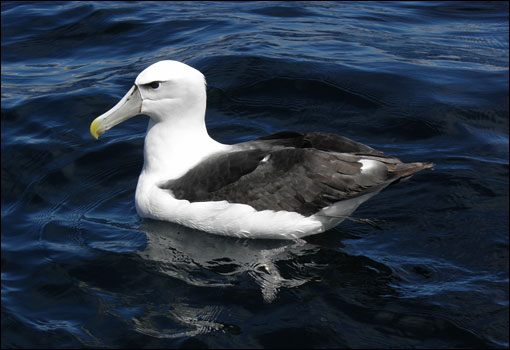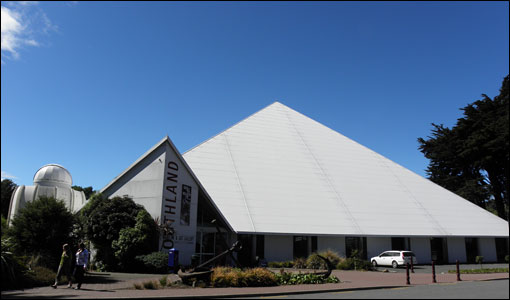I was picked up by Stewart Island Experience at Tuatara lodge for transfer to the ferry terminal in Bluff. The small catamaran ferry left Bluff at 9:30am. The crossing to Halfmoon Bay (Oban) on Stewart Island took about one hour and were quite nice, as the sea was not too rough. Of course I stood on after-deck and scanning the sea for seabirds, of which I record: White-capped Albatross (7), Sooty Shearwater (18), Common Diving Petrel (26), Brown Skua (1), Blue Penguin (6), White-fronted Tern (20), Spotted Shag (3) and Stewart Island Shag (6). Unfortunately, no Pterodroma-petrels were seen.
Landed in the small fishing village Halfmoon Bay. Picked up my baggage and walked some 200 metres to my prebooked accommodation at Jo and Andy B&B. Andy were awaiting me and its sort of homestay accommodation were very cosy with a genuine personal style, which appeal to me. Andy did help me to arrange a nocturnal Kiwi tour with Philip Smith in the evening and booking a watertaxi to Ulva island for the next day. When everything was done I headed to the DoC office across the street to get some information. I bought a few maps and then walked a few tracks for about three hours. I saw hundreds of Tuis (not kidding), Bellbirds, about 30 nice Kaka, Tomtit (30), Rifleman (5), Fantail (5), Yellow-crowned Parakeet (2 pairs), NZ Pigeon (50) and lot of Silvereyes. Lovely forests and good number of birds!
Quarter to nine in the evening I boarded the boat Wildfire for a nocturnal Kiwi tour to a remote beach named Ocean Beach. We were about 10 persons full of expectations. On our way to the site we saw some 20 Blue Penguins, one Giant Petrel, Spotted and Stewart Island Shags. Well at the landing-stage Philip had a little lecture about the Stewart Island Brown Kiwi and some instructions by the guide Greg. We then enter the track through the forest to the beach, which took about 20 minutes. Well at the beach we heard a male Kiwi calling in the forest! It was dark when we started to walk along the Ocean beach, where the Kiwis come to feed at night. The only torchlight used was handled by Greg. Finally, at the end of the beach we saw one Kiwi, but as we came closer it suddenly run away to the forest. Slightly disappointed, we walked the beach over three more times without a slightest glimpse of a Kiwi. We decided to do a very last walk 11:30pm. And almost at the end of the beach there were a Kiwi feeding! We got closer slowly and could watch this strange creature within four metres! As the Kiwis are sensible and afraid of noises we had to wait for the happy celebration. What an experience! Knowing it’s very difficult to get a chance to see a Kiwi in the wild! I got to bed at 1:30am.
 |
| Halfmoon Bay where the village Oban is located. |
 |
| A little part of the beautiful forest that surround Oban and most of the island. |
 |
| Kaka. A lovely, but very noise parrot. Like Kea, curious and not afraid of humans. |
 |
| One of about ten Kaka on the Fuchsia track. |
 |
| View towards Ackers Point from Wohlers monument. |
 |
| In good light condition the NZ Pigeon is a real beauty! |
 |
| A male of the South Island Tomtit. |
 |
| The skipper Philip Smith giving some brief instructions before leaving the harbour. |
 |
| A quite huge male of Stewart Island Brown Kiwi. No flashes were used when photographing the Kiwi. The only light source was Greg's torchlight. |
 |
| Another nice photo of the male Kiwi. Note the thick legs on both photos. |









































































